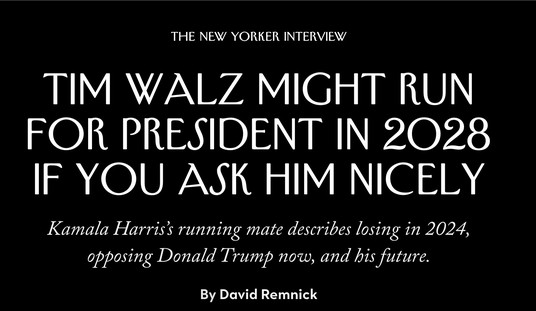Does the White House realize that Joe Biden’s Chip Diller act is wearing thin? For months, Biden and the White House either ignored inflation or pretended it reflected a healthy economy. Even when the White House belatedly realized the political risks of uncontrolled inflation — not to mention the damage to American households — did they start paying lip service to concern, but insisted that it won’t last long.
Biden still hasn’t budged off the “transitory” message even after today’s disastrous report. CNN dresses this up with a headline that Biden finally “acknowledges inflation causing real stress for Americans,” but that’s too little and too late:
“On higher prices, we have been using every tool at our disposal, and while today is a reminder that Americans’ budgets are being stretched in ways that create real stress at the kitchen table, there are also signs that we will make it through this challenge,” Biden said.
The consumer price index rose 7.5% in the 12 months ending January, not adjusted for seasonal swings, the Bureau of Labor Statistics said Thursday. It was the steepest annual price increase since February 1982 and worse than economists had forecast.
Biden reiterated forecasts that project inflation will ease substantially by the end of 2022.
“Ease substantially” is a vague prediction, not a policy. Inflation started picking up over the summer and has turned into a runaway freight train at high speed now, to use a metaphor that Biden should appreciate. His policies helped trigger this, especially his entirely unnecessary and massive stimulus package combined with Biden’s neglect of a supply-chain crisis that had already raised its ugly head when the March 2021 relief plan passed Congress.
Besides, inflation compounds, so even “easing up” in a few months doesn’t address the lost buying power that’s been eroding for the last several months. It might take years for wages to catch up to that erosion already, let alone by the time Biden thinks that there will be an “easing,” to whatever degree that happens.
Notably absent from Biden’s platitudes about making it through this challenge is any hint from Biden as how he plans to accomplish it. So far, Biden’s only policy response to date on inflation has been to insist on spending $4.5 trillion over the next ten years on his Build Back Better plan (using the CBO’s numbers for full ten-year costs). Joe Manchin has already balked at that spending plan, and declared vindication shortly after the CPI inflation rate report got published. But those spending plans looked dead already even before the inflation report, as Politico noted earlier this morning:
Build Back Never? The thought has crossed Democrats’ minds.
President Joe Biden’s $1.7 trillion social and climate spending plan is dead as written, rejected by Sen. Joe Manchin (D-W.Va.). The Senate is moving onto a host of other issues that will take up the rest of the winter and possibly some of the spring. And some Democrats concede there’s a small but distinct possibility they could have to shelve the whole endeavor indefinitely.
“Absolutely, there’s the possibility,” said Sen. Jon Tester (D-Mont.), who argued that Democrats can still assemble a productive midterm resume without a massive party-line spending bill.
“If we’re able to get the appropriations bills done, if we’re all able to get the Postal Service done, if we’re able to get some stuff done on toxic exposure [in the military], that would be a pretty good record,” he added.
Even before today’s report, Manchin insisted that any reconciliation bill had to be entirely re-oriented to deficit reduction, not expansion:
Rather than start with spending priorities and then evaluating how to pay for them, Manchin wants to start with tax reform as the goal of any party-line effort. He’s also insisting that social programs go through typical committee consideration, which allows Republicans more input. And he doesn’t just want it fully paid for; he wants it to significantly cut the deficit and put debt on a “downward trajectory.”
“That’s really what reconciliation is for: to get your financial house back in order. And that’s the thing that can be done and should be done,” Manchin said. He said he’s willing to reengage in negotiations if his fellow Democrats “want to be realistic about what the real problems are and how we can fix the problems. The main thing is getting our financial house in order.”
That’s a nod to the expected action from the Federal Reserve, which could jack up interest rates by a half-percent in their next meeting while modestly divesting their bond accumulation during the pandemic. That would force the US to pay higher interest on our debt, making not just deficit reduction but actual debt reduction a high priority. Even just addressing the hundreds of trillions in unfunded mandates from “safety net” social programs would save lots of cash on interest payments when those rates start going up high enough to deal with inflation. The Fed didn’t have that problem in 1979-82 when it used high interest rates to tame that cycle of stagflation.
Biden’s clichéd platitudes on inflation haven’t fooled voters. As bad as Biden scores on overall job approval, his numbers on the economy are actually worse, according to the RCP aggregation of polling. He’s currently at 38.3/56.3, a gap of -18, and YouGov is the only pollster to put him in single-digit negatives since the beginning of December. Harris has him at -23 (35/58) and NBC at -22 (38/60) on the economy. Beside YouGov, Fox News is the only pollster to put Biden above 40% on the economy for over a month.
No one’s buying Biden’s spin any more, because they can’t afford it. The Chip Diller act has just about reached the point where the stampede occurs, if it hasn’t already. Biden’s polling certainly makes him look flattened at the moment.








Join the conversation as a VIP Member